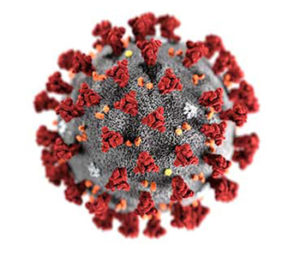
MUNCIE, Ind. — About one in six workers, or about 17% of U.S. employees, could be negatively impacted if social distancing becomes the norm as the nation attempts to contain COVID-19, says a new Ball State University report.
“Occupational Exposure to Social Distancing: A Preliminary Analysis Using O*NET Data,” an analysis by Ball State’s Center for Business and Economic Research (CBER), found that there are about 28 million jobs involving high levels of physical proximity with others and working with others. These jobs pay an average of $32,774 per year.
Researchers created their model by using data from the O*NET, which is a U.S. Department of Labor-sponsored product that evaluates a variety of worker- and job-related characteristics of each occupation.
Social-distancing guidance from the Centers for Disease Control to stay at home or work from home will disproportionately affect works who must be in contact with customers or fellow workers and who typically work in close proximity to them.
“Workers in industries likely avoided by households practicing extreme social distancing will likewise face negative labor demand shocks, as restaurants, movie theaters and recreational activities close,” CBER Director Michael Hicks said. “In these instances, all workers—not just those who interact with customers and with one another—will likely experience negative labor demand shocks. They could have their hours cut or their jobs eliminated.”
“These workers are in occupations that are less well paid on average,” he said. “Though we don’t have data available on benefits, it is near certain these workers are in occupations well known to have lower incidence of sick days, stable work hours and other forms of workplace benefits. This makes staying home from work and accessing medical treatment (or even diagnosis) difficult for infected workers. And, given the types of tasks performed by these workers, it is difficult for coworkers to maintain appropriate social distances, increasing the transmission of the virus.”
Hicks acknowledges that the research team does not have good comparative evidence on the wage effects of extreme social distancing, since it has not happened in recent decades across a large share of a nation for a lengthy period of time.
The CBER analysis is among the earlier studies of this phenomenon, and is based on significant assumptions regarding the magnitude of lost wages due to social distancing, he said.
“We cannot predict the duration or share of jobs lost to prudent disease-prevention measures. However, we can predict that the amount will be significant and warrants immediate public-policy attention among federal and state policymakers.”
For more information about CBER, go to bsu.edu/cber.



















Add Comment